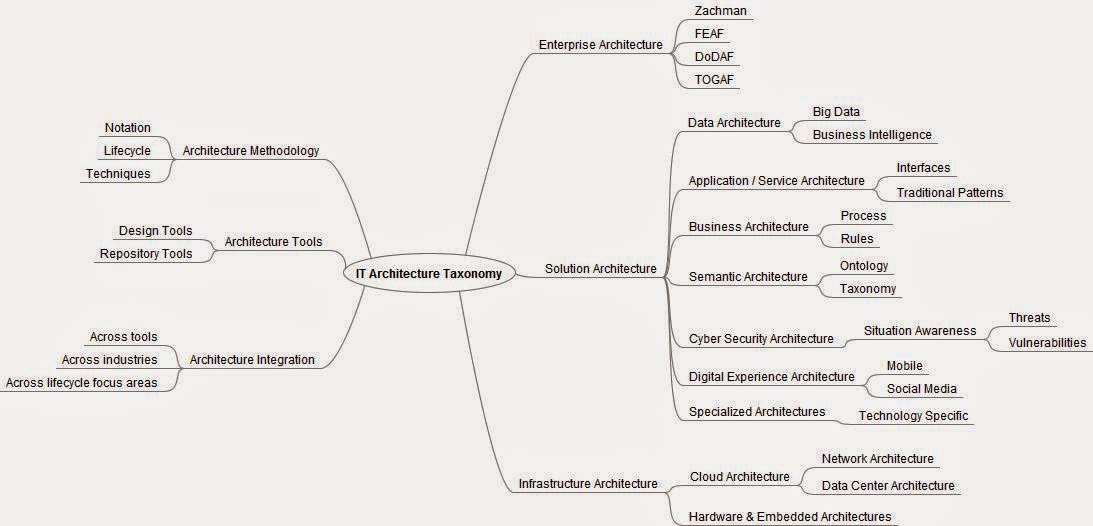This Blog is titled "IT Architecture Journal" precisely because it is worth emphasizing how standard architecture best practices can be applied in any of the typical architecture engagements you are likely to find yourself in. While many architects may spend their entire careers focused in just one sub-domain of IT Architecture, there is much that can be learned and applied by examining how other architects face similar challenges utilizing different technology stacks. The mind map below illustrates a fairly simplified perspective of how the various types of IT architecture might be classified. This may not seem simplified but let's take a closer look within one sub-domain listed below - Data Architecture - to see what it's actually comprised of:
• Data Modeling
• Big Data Architecture
• Content & Document Management Architecture
• Knowledge Management Architecture
• Business Intelligence Architecture
• Data Storage Architecture
And of course, a Data Architect might in fact be a SQL Server Architect, an Oracle Architect, a Cognos or Business Objects Architect, a DB2 or legacy DBMS Architect and so on. The common thread for all of these would be the ability to design SQL, build database schemas and do Entity-Relationship Diagrams or ERDs. The larger thread then connecting those data-related capabilities to holistic solutions would be integration within a Solution Development Lifecycle.
IT Architects are typically people who enjoy taking on greater levels of responsibility in solution design and delivery and who aren't easily daunted by complexity. Architects must be able to juggle multiple perspectives and remain cognizant of solution inter-relationships, dependencies as well as the downstream implications of design choices before they're made. Sometimes IT Architects are viewed as a jack of all trades yet master of none," but this isn't quite fair - because there is in fact a trade that we do master - the ability to Architect solutions.
The IT Architecture Journal will focus on the skills, tools and best practices you'll need to in order to function as an architect. We will provide numerous real-world case studies to highlight key concepts in context. We will, by necessity, delve into a variety of diverse technologies in order to illustrate how architecture techniques can be used to improve outcomes.
copyright 2014, Stephen Lahanas
#ITarchitectureJournal
#StephenLahanas
#Semantech-Inc











0 comments :
Post a Comment